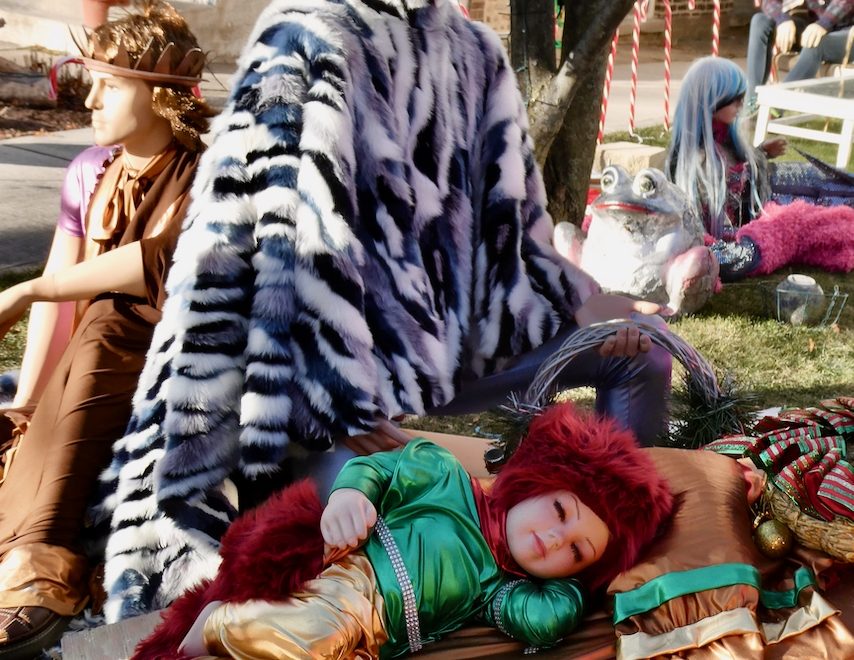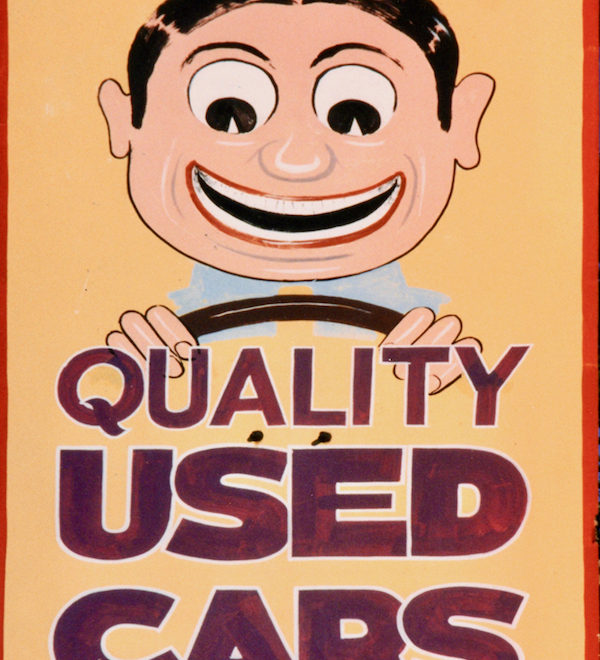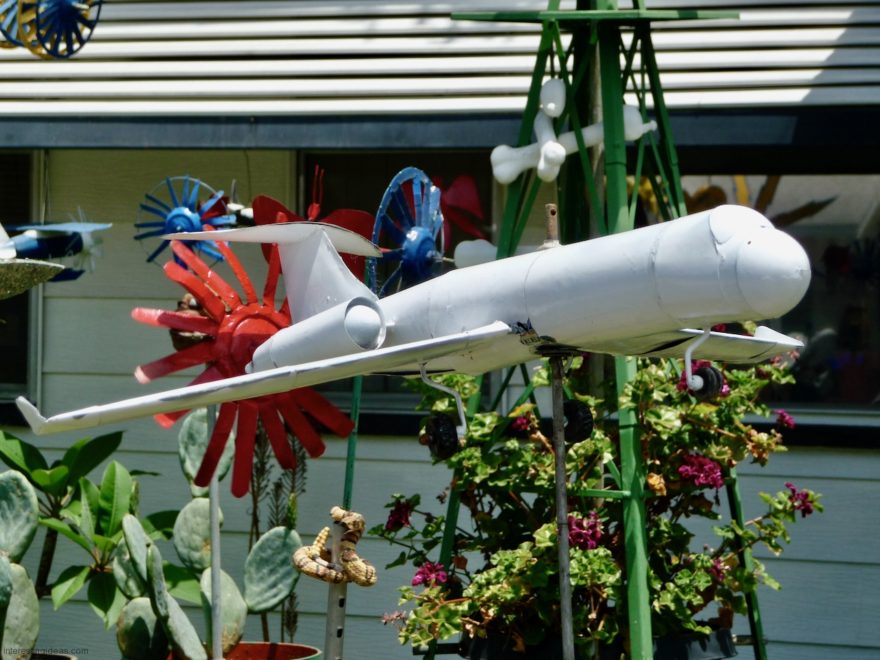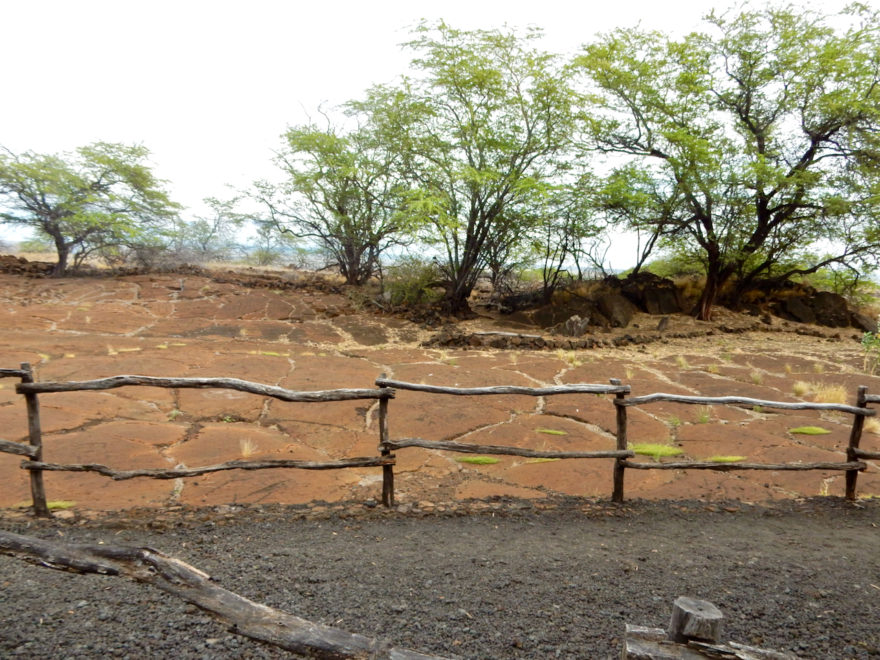There are isolated bursts of brilliance all along Western Avenue and other working-class stretches of Chicago’s orderly street grid. And every once in a while you come across a building or a sales lot where the signmaker’s art gives way to something far more ambitious than a simple commercial illustration. Here are three examples — all gone now — where the signage adds up to a large-scale piece of art.
Continue readingCategory: Art environment
The Famous Bottle Cap Inn
Just added: a recently acquired Bottle Cap Inn postcard showing a different angle on the exterior. Click here for a full gallery of Bottle Cap Inn images, outside and in.
Continue reading
A Chicago Nativity In Spectacular Fashion
I’m as guilty as anyone of overusing the concept of “greatest ever,” but this nativity scene is a legitimate candidate for the title. A full-blown, if temporary, art environment, it is the work of retired fashion designer and cosmetologist Jim McCall. You can read about McCall and the site and see more photos in this Block Club Chicago story. More art environments here.
Continue reading
A Western Avenue Automotive Art Environment
Here’s a look back at a spectacular automotive art environment that once graced Chicago’s greatest decorated street. Regency Auto Sales was a blast of color and excitement as you headed down Western Avenue toward Chicago’s southern boundary. Each of the carnival-like signs scattered around the car lot was a strong work of art in itself. Together they formed an ensemble as exciting and expressive as any art environment should be. Just north of Regency was Tom’s Auto Mart. It was not nearly as elaborate as Regency, but its use of Disney characters to sell used cars was charming, a nice
Continue reading
Whirligig Gardens: Make The Wind Speak
Wind power today usually means alternative energy, but there are those who harness it as a source of personal expression: The whirligig makers. Vollis Simpson ran a machine shop, did heavy equipment repair and was involved in moving houses. In retirement, he started tinkering with odd parts he had lying around. And he started making whirligigs. Big ones. His original whirligig park, in an out-of-the-way field in out-of-the-way Lucama, North Carolina, was the world’s most spectacular concentration of these wind machines. Simpson died in 2013, but the whirligigs were preserved and relocated to a dedicated park in nearby Wilson, where they
Continue reading
Review: Walks to the Paradise Garden
Walks to the Paradise Garden: A Lowdown Southern Odyssey, by Jonathan Williams, photos by Roger Manley & Guy Mendes. Institute 193, Lexington Kentucky and New York, 352 pages, 100 color images and 80 black and white , 2019. ISBN: 978-1732848207. Hardcover, $45. It’s a shame this book wasn’t published as intended in the 1990s. Not only would its author have still been alive, but so would most of the artists he encountered on his travels across the back roads of the South. Inspired by William Least Heat-Moon’s Blue Highways, Jonathan Williams, poet, publisher and lover of the vernacular, undertook a series of
Continue reading
Petroglyphs: The Puako Concentration of Carvings
The Puako site, which is only a few miles from Waikoloa, has nearly 4,000 documented petroglyphs, some likely to be at least 800 years old. There are some fantastic groupings of anthropomorphic figures here. Some carvings have been lost to construction and fire-fighting activities, and the whole site is set within a dense forest of invasive kiawe trees. Some of the surviving carvings have been damaged by human activities, in some cases vandalism, but also by being loved too much. Taking rubbings or making casts harms the petroglyphs. But the site is still a remarkably concentrated instance of human creative
Continue reading
Petroglyphs: The Pu’u Loa Carvings
The Pu`u Loa petroglyph site is in a more-or-less middle-of-nowhere section of Hawaii Volcanoes National Park. It was a popular destination, however, over the hundreds of years when its 23,000+ carvings were being created, and it remains deservedly so today for visitors to the park. The site is especially rich in cupules, where umbilical cord stumps were placed to ensure health and long life for babies. It appears many family members made the trek to this location to perform that ritual. Much of the information on this and my other Hawaii pages is from the highly recommend Spirit of Place:
Continue reading
Petroglyphs: Waikoloa Symbols
Hawaiian petroglyphs are rich in symbols, with a tremendous concentration at Waikoloa. Circles predominate, some in conjunction with cupules, some concentric, and some stopping short of completion. One theory holds that circles recorded a circumambulation of the island, with multiple circles indicating the number of people in the group. But the certainty of that account seems a bit shaky. More dependable, it seems, is the narrative of cupules being the repository for umbilical cords. Much of the information on this and my other Hawaii pages is from the highly recommend Spirit of Place: Petroglyphs of Hawaii, by Georgia Lee and
Continue reading
Petroglyphs: Waikoloa Vistas
The field of petroglyphs at Waikoloa is a survivor of intense development all around it — resorts, condos, golf courses, shopping malls, and more. The vistas remain impressive, however. Much of the information on this and my other Hawaii pages is from the highly recommend Spirit of Place: Petroglyphs of Hawaii, by Georgia Lee and Edward Stasack. It seems to be the most authoritative account of what we know about the carvings, and the difficulties of knowing what we know. The extensive data it lays out reflects an impressive amount of research, and the authors also appreciate the aesthetic impact
Continue reading